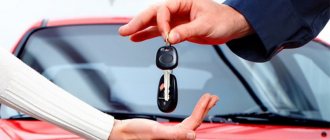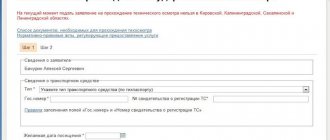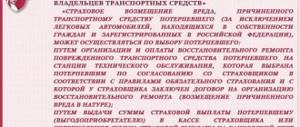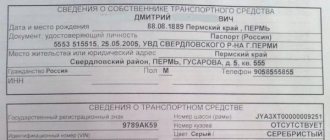Procedure
We recommend that you carry out the first check of the car at the stage of viewing advertisements. Choose the options you like, write down the license plates and check the cars using the Autocode service. The system will issue a report with a detailed history of the car. If the information in the ad contradicts the report data, it is better to immediately abandon this option and not waste time meeting with the seller. Most often, sellers hide the real mileage, number of owners, work in a taxi and participation in an accident.
Start the meeting by checking your documents. Next, proceed to a visual inspection of the car. After that, take it for a test drive. Finally, go with the seller to the service station. Specialists will identify all the technical flaws of the machine. This will allow you to bargain or even refuse to buy a bad vehicle.
Using the Scanner
Modern cars have an on-board computer. A professional auto repair shop must have a scanner connected to a computer. This way the technician will be able to check all the car’s systems.
As already mentioned, this procedure costs a lot of money. But it’s worth it, since during the inspection process, breakdowns are identified, which later lead to more costly repairs.
When inspecting a car, you should not forget to check the documents. It is imperative to check the numbers on the body and engine of the car - they must match the entries in the technical passport. In addition, you should check the history of the car in question using the road inspection database. This service is relatively new and not everyone knows that it is available completely free of charge.
If you want to know more about the nuances of buying a car, read articles on how to check the legal purity and technical condition of a car, how to spend maternity capital on buying a car, whether you need insurance and how to get it, how to bargain correctly to get a discount, how to safely transfer and check the money received.
Documentation check
Before buying a used car, it is important to check the documentation:
- PTS;
- vehicle registration certificate;
- seller's passport.
Make sure that there are no special stickers or marks on the PTS. What's the catch here? Marks are placed in cases where the body or engine numbers are interrupted, unreadable or unreadable.
Be wary if the seller provides you with a duplicate title. A duplicate PTS is issued if the original was lost or damaged, and also if there are no free lines left to enter the owners of the car. Therefore, you need to check with the seller how many owners the car had and for what reason the duplicate was made.
Also read: What the PTS will tell you: how buyers of used cars are deceived
But don’t rush to refuse to buy a car just because it’s a duplicate. Check your car using the Autocode service. If the verification data does not contradict the seller’s words, then there is nothing to fear. If the service reports that the vehicle had two or more owners, and the seller claims that he is the first and last owner, then it is better to refuse the transaction.
Be sure to check the data from the seller’s passport with the data specified in the PTS. Even small differences in documents may subsequently lead to you not being able to register the car.
What and how should you look before purchasing a vehicle?
Before purchasing a used vehicle, you need to ask the seller questions and make sure the following facts are present or not:
- presence of original PTS;
- whether the car has previously been involved in traffic accidents;
- whether it was repainted;
- whether there were adjustments to the electrical, fuel, steering or brake systems.
If doubts arise about at least one of the listed points during a quick diagnosis and conversation with the seller, you need to abandon this purchase and consider another option.
Do not be tempted by the low cost of the car , since the car market is oversaturated with offers. If no doubts arise and everything is satisfactory, then you can proceed to a more detailed examination.
Read more about checking documents and technical condition when buying a used car here.
Car bonnet
The technical condition of a vehicle begins with external diagnostics of the hood. It is necessary to open and close the hood 3-5 times, thereby checking the quality of the lock. It also helps to check the inside for paint chips and rust. Then it is recommended to diagnose the operation of the lever; this should be done from the driver’s cab.
Engine compartment
Checking the power unit begins with its startup. A properly functioning and correctly adjusted engine starts within a couple of seconds after the driver turns the ignition key, i.e. from a half turn.
The unit should operate smoothly, without any knocking or other extraneous sounds. After the engine warms up, it is recommended to walk around and check for smoke from the exhaust pipe. It should either be invisible or light gray and quickly blown away by the wind.
Car body
Then an external inspection of the car body is carried out, the monotony of the paintwork is assessed .
The presence of zones in which the tone has a difference in shade or gloss indicates the possible consequences of an accident that could occur after repair work or as a result of body corrosion. To find repainted areas or putty on certain parts, you need to use a thickness gauge. An ordinary magnet, which should be wrapped in a rag, will also work. In those areas where the putty layer is thicker, the attraction will be less.
If, as a result of such diagnostics, it was revealed that the seller is not telling the whole truth or is hiding shortcomings, you should refuse to complete the transaction. If a used car looks absolutely smooth, there are no various scratches on it, this should also raise a number of suspicions. Perhaps the technical condition of the transport does not matter, because... it was in an accident after which it was completely repainted.
This should alert the buyer to the possibility that other hidden damage may be revealed in the future. Therefore, it is worth considering another vehicle with a more open history of use . If the seller does not have information about the condition and history of the car, this is, in particular, another reason for refusing to purchase a car from such an owner.
If it was decided to continue studying the body without information from the person who previously owned this car, then you need to:
- Record any paint defects as they will need to be treated and painted to prevent further corrosion.
- Inspect the car from all sides with the doors closed. If they do not close well or sag significantly, this may indicate that the vehicle was involved in a traffic accident, and the doors may also have been replaced or repaired after deformation.
The gaps between the door and the body of the car, the gaps between the hood, the tailgate and the body must be the same size around the entire perimeter.If there are the slightest deviations, this indicates a changed body geometry, which is a consequence of a serious accident. Such a car has poor handling, so it is better to refuse to complete the purchase and sale transaction. Check the back door in the same way.
- When opening the doors, you should inspect the thresholds, sealing resins, and seams from factory welding.
If emergency repair work has been carried out, the seam will have a different shape or size than the factory one. The picture in the door arch immediately reveals the fact that the car has been repainted, since the effects of spraying remain on the factory paint layer. The boundary is usually hidden under seals made of rubber and can be found by bending back the sealing device. Make sure there are no extra washers in the door hinges, which would indicate an attempt to take up the slack in the door mechanism that occurs when replacing it. - Diagnostics of each door mechanism is carried out, the serviceability of buttons, locks, handles, as well as mirror adjustment are checked. Particular attention should be paid to the reliability of fasteners on the panels and the presence of gaps. If there is a gap between the edges of the panels, it means they have been removed and damaged by the plastic clips.
- When diagnosing the operation of locks, it is recommended to carefully study their operation. If the door mechanism or lock has been replaced, there will be signs of adjustment to the position of the locking device. It is necessary to determine the reasons for these changes.
- By opening and closing each door 5-7 times, you can determine the ease and tightness of installing the lock without jamming. If it opens strongly or is accompanied by a strong bang when closing, it is necessary to determine the reason for this. This may be the development or deformation of a landing type nest, the repair of which will require significant financial investments.
- During an external inspection of the roof, you should pay attention to possible signs of its replacement, which manifest themselves in the form of differences from the tone of the paintwork, geometric defects, and worn out drains.
- Then the ease of opening the hatch cover and the fuel tank is inspected.
How to inspect lighting equipment?
First of all, it is recommended to inspect the front and rear optical devices. The surface of the glass should not be scratched or have any other damage. The headlights must have a rigid mount, without play.
Lenses with a lot of scratches need to be replaced early as they have a major impact on the brightness of the device. Depending on the model and brand of vehicle, replacing a headlight can lead to large financial expenses.
The instrument panel lighting system and interior lighting are checked with the engine running. The brightness of the light flux should be adjusted smoothly.
Body kit condition
Both bumpers are checked one by one for the reliability of the suspension, the presence of cracks, scratches, and signs of repair. The bumper should be smooth and tight without large gaps. Fog lights and parking sensors must be securely fastened.
Then the condition of the mudguards is checked for their integrity . You should also check how thresholds, moldings and other similar elements are fixed.
Wheels
You should pay attention to the presence of dents and ellipsoidal deformation in the discs. If there are defects, they affect the operation and condition of the suspension components. They can only be discovered through a test drive.
Next, the tire pressure is checked, which should be the same on all wheels or be in pairs: on the front and rear wheels. Some unscrupulous sellers may inflate tires to different pressures in order to hide traces of an accident and, as a result, the inevitable deformation of the chassis after an accident.
then measured using a ruler . It rarely happens when a used car has new tires. Therefore, it is important that the tires can last until the end of the season. Uneven tire wear indicates that there may be damage to the body geometry and this should be checked on a lift.
Glazing
When it comes to checking the glass, it should not have any cracks or a dense network of small scratches. The front and rear glass should not have darkening films. The functionality of heated double glazed windows can be checked manually by turning on the heating and touching the glass after a while.
The operation of washers and wipers is checked simultaneously , including when operating in different modes. At the same time, you need to pay attention to the marks left by the wipers. If there are large gaps, we can conclude that the rubber bands need to be replaced. If the headlights are equipped with wipers and washers, their operation must also be checked.
Particular attention should be paid to sealing windows. If the glass is new, but there are traces of sealant, then the glass on the door has been replaced. It is necessary to find out the reason.
Salon
The seat needs to be inspected . In this case, the correct adjustment of the backrest and longitudinal position of the chair is checked. There should be no play in the backrest position. Chairs must move freely and be securely fixed in the chosen position. In the summer, don’t forget to check the seat heating.
Next, check the rear shelf for integrity, the absence of additional holes and the strength of its installation.
Checking the ceiling consists of checking the condition of the leather, the functioning of the upper hinges or handles, the functionality of the general interior lighting and fixing the position of the sun visors. The top hatch should open smoothly. It must be free of damage and cracks. The seal is free of deformation and tearing.
Next, check the reliability of the installation of the dashboard . It must be securely fixed. Don’t forget to check the glove compartment, namely how the glove box door opens and closes with a latch and lock.
Then check all the seat belts: whether they are damaged, the condition of the latches, the degree of tension, whether they are blocked during a sudden jerk.
Luggage compartment
Checking the rear door is the same as for other doors and the hatch. The spare tire area should be carefully inspected for corrosion, welding or paint by rotating the trunk lid.
Then you need to check the effectiveness of the trunk lighting . When opening and closing the rear door several times, it is worth paying attention to the accuracy and reliability of the lock and internal drive.
Dashboard
The operation of instruments and indicators on the dashboard is checked in accordance with their indications. The deflector handles should move without jamming and should also be securely fixed in any position. After warming up, the cigarette lighter should clearly come out of its recessed position.
With the help of a friend, you need to check the correct operation of all optical devices:
- alarm;
- switching headlights from low beam to high beam;
- direction indicators;
- side lights;
- reverse gear;
- fog lights.
The functioning of the central lock is checked for accuracy of latching and flashing of the devices. When turning the steering wheel, check whether the anti-theft lock is activated. When the doors are closed, the seat belt warning light should be on.
It is necessary to start the engine and check the operation of other devices - tachometer indicators, oil temperature and pressure, etc., in accordance with the vehicle's operating instructions.
Heating and air conditioning
First you need to close the doors and windows. Later, when the engine is running, turn on the heater to maximum temperature. After some time, warm air from all channels should warm up. There should be no smell of burning or fuel.
Turn on and test the air conditioner in different modes. During operation, it should not make any extraneous sounds. A cold stream of air should appear.
Mileage
On average, a typical personal car travels 10-20 thousand kilometers per year. Consequently, after about 5 years, it runs about 100 thousand kilometers. During this time, 2-3 mm of the pads remain on the brake discs. New pads are a sign that the mileage will be more than 100 thousand km.
The seat upholstery fabric is washed out after approximately 90-130 thousand km. mileage, leather up to 200,000. The armrest and side support of the seats are erased most quickly.
Checking your car for fines
There is always a possibility of purchasing a car with outstanding fines. Often, sellers themselves do not know about the debts to the traffic police, but sometimes they deliberately withhold information so that all debts fall on the new owner.
Of course, if you buy such a car, you cannot be forced to pay these fines; this is the responsibility of the former owner. However, there are situations when, due to non-payment of fines, registration restrictions are imposed on the car. In this case, the new owner will not be able to register the car.
To identify the presence of fines, you can use the following services:
- official website of the traffic police;
- Autocode service.
To check a vehicle through the official website of the traffic police, you need to know both the license plate number of the car and the number of the registration certificate. To check using the Autocode service, you just need to know the license plate number of the car. At the same time, from the report, in addition to the history of fines, you will learn data on mileage, technical inspections, compulsory motor liability insurance, restrictions and much other important information.
Verification methods
Thanks to the World Wide Web, there are many ways to check the cleanliness of a vehicle online today. They do not take much time, they make it possible to obtain comprehensive information about the car (registration plates, full name of the car owner, VIN number), and to verify the honesty (lies) of the seller.
By checking the FSSP databases and traffic police portals, you can find out for free whether the vehicle is listed in the databases of banks, insurance companies, and pawn shops. Such queries can be answered on other resources for a fee.
Reference! Databases cannot be trusted completely. The data may be inaccurate or outdated. When inspecting the car in person, a potential buyer should ask to see the original title. The presence of a duplicate is a reason for a thorough check. Of course, it is issued by traffic police officers in case of loss of the previous document, or if there are a large number of owners who simply have nowhere to be recorded in the old vehicle title. On the other hand, the car may be listed as collateral, because it is the credit institutions that keep the original when issuing a loan
Through online services
You can check how clean your car is for free on the websites of official government agencies:
- traffic police.rf allows you to obtain the requested information by VIN code. Here you can run the car through the search database to determine the presence (absence) of registration restrictions, check the number of owners since the first sale, and find out information about accidents since 2015.
- reestr-zalogov.ru exists to check the owner of the car by name, date of birth for collateral, and the presence of debt obligations.
- fssprus.ru (bailiffs website), where, based on the name and year of birth of the seller, you can identify whether a vehicle is on the administrative wanted list, the presence of restrictions, unpaid fines for traffic violations, and possible participation in legal proceedings.
Checking a car before purchasing is possible with the help of some paid resources - mycar-info.ru and banki.ru, where it is enough to enter the series (number) of the registration certificate, VIN code to run the vehicle through numerous databases, car pawnshops, quick loans, financial organizations.
There are well-known automatic online services (AvtoBot.net, Autocode) associated with official databases that, according to VIN code or state code. The number is given information about the car’s history, mileage, and passing an official technical inspection.
Diagnostics
Full diagnostics is not a cheap service, but it is an excellent way to check a car for faults and defects.
At the same time, specialists at the service station:
- assess the condition of the body under the installed moldings, fender liners, and overlays;
- inspect the power engine by placing it in a horizontal position;
- assess the condition of the oil for the presence of small particles, which may indicate wear of the liners and crankshaft;
- check the frame, front apron, gearbox, pulling out the dipstick, gearbox;
- pay attention to fastenings and brakes;
- check the suspension and chassis (by blocking the steering wheel) so that there is no play;
- They examine the frame - the front apron of the car.
Fact! If the adjusting grooves are sawed through and the bolts are unscrewed, then there is a high probability that the car has undergone major repairs in the past or been involved in an accident. If there are traces of welding, then it is better to refuse to buy such a machine.
Documentation
The car owner's documents (technical passport, vehicle passport, registration certificate, passport of a citizen of the Russian Federation) must be official, genuine, and correctly filled out.
And the main document of the car is the PTS, which needs to be checked first, because it is forged:
- look at the number of indicated owners, history, year of manufacture, watermarks;
- study the passport, its special pattern on the back side, which should be clearly visible and palpable;
- view the title of the document that should be stamped;
- check the correctness of the VIN number with a round stamp in the lower left corner.
Expert opinion
Artemyev Dmitry
Experience as a forensic expert in the field of automotive technical examination for more than 2 years, more than 3 years of work in the field of insurance disputes, appealing guilt in road accidents.
Ask a Question
If the old owner has a duplicate, then it is reasonable to ask for a photocopy of the main title, which will also confirm his intentions when selling the car.
The note! If the car has 2 or more owners, then the owner may well have a duplicate and this is not a reason to panic or refuse the transaction. The main thing is to check the VIN code, for example, on the Autocode service and compare it with the words of the seller. There is nothing to fear if the data matches.
By VIN code
VIN code is an identification number of 17 characters, by which you can find out the year of manufacture and characteristics of the vehicle. Experts recommend paying attention to possible corrections to the numbers, i.e. look at them carefully.
Checking car documents before purchasing:
You can conduct an online check using the traffic police database using the following services:
- ;
- Autocode;
- FSSP;
- , find out whether the car is listed as collateral or whether it is under arrest.
Using the VIN code, you can find out all the information about the owner and the car, right down to photos, social accounts. networks, phone numbers. It is recommended to check the VIN code using several automatic official databases at once - the Federal Customs Service, the Federal Bailiff Service, the State Traffic Safety Inspectorate, the OSAGO, and the register of pledges.
Reference! VIN is a unique code, and state code. The number may be fake. If the 17-digit code is unknown to the potential buyer, then it can be obtained from the state. number on the service. Thus, you can find out for free reliable information about the car and possible restrictions on registration actions.
By body number
The traffic police website is error-free and authoritative for checking the legal purity of a car. Even if the VIN code is unknown, you can get a full report free of charge using the chassis or body number.
After filling out a special form and processing the request, information about the search will be issued from customs, social security, and law enforcement agencies. Although it is better to check the markings on the body in person. The number may be interrupted.
Additional Information! To check the car, experts advise contacting an organization on a paid basis, which will examine the marking elements, conduct a detailed examination, and draw up a report on the work done. Fraudsters are skillfully interrupting numbers today. It happens that even experienced specialists cannot bring a craft to clean water. Owners must understand that re-registration of a vehicle with incorrect numbers or with an incorrect engine number at the State Traffic Inspectorate will become impossible. We are talking about theft and, most likely, a criminal case will be opened, and the car will be sent for examination.
Expert opinion
Artemyev Dmitry
Experience as a forensic expert in the field of automotive technical examination for more than 2 years, more than 3 years of work in the field of insurance disputes, appealing guilt in road accidents.
Ask a Question
Today, in order to sell a car, criminals manage to erase the original engine number and etch the plate with acid. Therefore, it is better to check the engine directly with the seller at the traffic police and provide original documents that correspond to the technical documentation. The body number must be clearly stamped on a thin metal plate and firmly soldered to the engine body.
According to state number
Check the cleanliness of the car according to the state regulations. The number can be found on the official website of the traffic police. All information about possible arrests, restrictions and road accidents is provided free of charge. The main thing to check is to enter the VIN code.
If the seller checks the car online without documents and the VIN bar is unknown, then you can find out by state registration. number.
For what:
- enter the number in the form provided;
- click the “Find” button;
- you get the result.
The form should reflect information about the diagnostic card and a date by which it will be easy for the seller to find out: when the car was insured and whether problems might arise during registration.
At the notary
It is always better to drive the car through available services in advance than to subsequently make a claim to a careless seller or lose your investment. It is recommended to check the vehicle for collateral on the free website www.reestr-zalogov.ru through the notification register. It is possible that the loan was issued by the seller, but was not repaid. The vehicle is listed as collateral. If the borrower is included in the register, then a personal registration number will be assigned and this fact can be clarified through the notary chamber.
Reference! The pledged property is the property of the bank. It will remain so by law until the borrower pays the debt in full. The bank has the right to repossess the car if the buyer is insolvent. It is for this reason that the sale of a vehicle often begins without notifying the potential buyer of the fact of the pledge. The bank has the right to take the car from the new owner after a certain time. The victim risks suffering huge losses.
The Chamber of Notaries provides a database of pledges. By going to the official website, just enter the car number and the seller’s passport details to find out possible restrictions, prohibitions, and encumbrances. Although Auto.ru is a well-known site for buying and selling used cars, it does not have agreements with all banks. Also, MCOs and quick loan centers do not cooperate with the Chamber. The check will become useless if the vehicle is arrested but not included in the State Register.
Expert opinion
Artemyev Dmitry
Experience as a forensic expert in the field of automotive technical examination for more than 2 years, more than 3 years of work in the field of insurance disputes, appealing guilt in road accidents.
Ask a Question
If a car often changes hands and owners change, then this is an indirect sign that it is listed as collateral. Careless car owners prefer to get rid of their vehicle faster. If the car was purchased through a dealership, then when purchasing, it is reasonable to ask the seller for documents, a purchase and sale agreement, a cash order, and receipts in order to familiarize yourself with the history. If necessary, you can always request financial documents from the dealer.
At the traffic police
The official website of the traffic police provides the following information about the vehicle:
- presence (absence) of restrictions on registration;
- number of owners;
- Full name of the car owner;
- official registered data on road accidents;
- Possible location of the car is wanted.
Checking the car for collateral
If a car owner takes out a loan secured by a vehicle or a car loan, then the car is collateral. If you do not know this information when purchasing, then the bank or mortgage holder may subsequently oblige you to repay the loan or collect the collateral from you.
You should not immediately refuse to buy if the car is pledged to the bank. Sometimes credit institutions themselves put up for auction and sell interesting models at a fairly low price.
How to check whether a car is considered collateral? To do this, you can use the following sites:
- register of the notary chamber;
- Autocode service.
To check a car through the registry of the notary chamber, you need to know information about the pledgor, the registration number of the notice and the VIN of the vehicle. For Autocode, a VIN or license plate number is sufficient.
For professional car sellers, we have developed a service for unlimited car checks “Autocode Profi”. “Autocode Pro” allows you to quickly check a large number of cars, add comments to reports, create your own lists of liquid vehicles, quickly compare options and store data about cars in an orderly form. A subscription to unlimited car checks costs 2,500 rubles per month.
Step-by-step instruction
To check the legal purity and receive a full report, just enter the VIN number on the online traffic police website.
Step-by-step instruction:
- go to the service;
- find the tab – “Services”;
- click on the link – “Vehicle check” (in the top panel);
- enter the VIN number, click on the “Check” button.
The screen should display information about whether the car is wanted, information about an accident, the presence of damage, any restrictions on registration, and the car’s registration history. If the check fails, you should try again. The service often experiences glitches.
To check the car to see if it is pledged, you need to go to the official website of the registry.
The steps are as follows:
- find the tab – “Find in the registry” and go to it;
- enter a number - identifier or information about the subject of pledge;
- 3 types of property should appear, select “Vehicle”;
- enter the number in the empty window;
- Click on the “Find” button.
Expert opinion
Artemyev Dmitry
Experience as a forensic expert in the field of automotive technical examination for more than 2 years, more than 3 years of work in the field of insurance disputes, appealing guilt in road accidents.
Ask a Question
If the identification number is entered correctly, the verification results should appear and the message “No results found for this request” will appear. If the car is actually pledged, then the notification number, VIN code of the car, full name of the pledgor, and registration date will be displayed.
You can get quick and complete information about the pledge on the “Autocode” website, for which:
- go in and select the desired verification option;
- Click on the “Check” button, then a short report should appear containing the following information: steering wheel location, body type, engine size, license plate number, year of manufacture.
If you order a full report for 349 rubles, you can get more extensive information: find out whether the car was used as a taxi, whether it is in collateral, whether it was involved in an accident, whether it has restrictions on registration, what the mileage is, whether the owner has any fines. Also read the history of registration actions.
You can pierce a car on the official website of the FSSP, although the actions will become justified if paperwork is opened. To check, you should register on the website fssprus.ru. Next, click the “Find” button, “Clerk Bank Menu”. Then enter the full name of the car seller, as an individual, fill out the proposed fields, and send a request. Obtain information if it is present in the database.
Mileage check
More than 50% of car sellers inflate mileage. This procedure costs from 1,000 to 3,000 thousand, while the owner increases the cost of the car when selling it by a larger amount.
Also read: How sellers cheat mileage
You can check the veracity of mileage data in several ways:
- check documents;
- carry out a proper inspection of the vehicle;
- contact specialists.
Also read: How to check car mileage
How to check a car when buying?
In recent years, the majority of motorists have purchased cars through the Internet or newspaper advertisements. The relevance and popularity of automobile markets is gradually disappearing, giving way to new methods of sales.
Now you don’t need to drive your car to the market and wait for hours for a client. This took a considerable amount of free time and required preparation of the car. Today, it is enough to take a photo of the car and place an advertisement for sale on one of the popular resources on the Internet.
Likewise, the buyer will not wander aimlessly through the market in the hope of finding the car of his dreams. He only needs to set certain search parameters and a list of cars available for purchase right in front of his nose. Very convenient and saves a lot of free time.
To check the car, you must take one more person with you. It's safer and more convenient. If you are not strong in technology, it is better to hire someone who knows and understands cars. The chances of a positive outcome will increase significantly. It is recommended to take with you: a notepad for notes, a pen or pencil, a flashlight and a good mood.
Inspection of a car when purchasing can be divided into 3 stages:
1.External
It consists of an external inspection of the car and an assessment of its driving performance. First of all, do not forget to say hello to the seller and talk with him a little on an abstract topic. It will be good if you can insert a small joke into the dialogue. This will help defuse the situation and establish contact. After this, you can begin inspecting the vehicle.
-car body
It is necessary to inspect the car only outdoors in natural light. It is advisable to do this in sunny weather. Boxes, garages and underground parking lots with artificial lighting are swept aside immediately. They make it impossible to objectively assess the condition of the car’s paintwork.
It is necessary to inspect the car body from all sides without haste. Particular attention should be paid to areas that have differences in color. These elements have clearly been repainted, indicating damage. If the seller stubbornly stands his ground and assures that the car is not damaged or painted, you can safely leave and look for another car. He is clearly lying and most likely the quality of car repairs after an accident leaves much to be desired.
All damage to the body: dents, scratches, chips and corrosion spots must be written down in a notebook. This will help in the future when bargaining, because every damage requires repair and therefore material costs.
The car doors, trunk and hood must fit snugly to the base of the body and have no gaps. Violation of the geometry of the car indicates that it has been through a serious alteration. If the edges of the doors are “recessed” or, on the contrary, protrude, it means that they were removed and installed carelessly in violation of technology.
After opening the car doors, you must carefully inspect the rubber seals and welds. Their thickness and uniformity of coloring should be the same. If possible, you need to bend the seals and compare the color of the paint underneath with the shade of the body. The repainted car body will have differences in the color of the paint under the seal.
Be sure to open all the doors and check their functionality. All decorative elements must be in place. Pay attention to the operation of the window regulators in both manual and automatic modes. You need to check the ease of opening and locking the door locks. There should be no jerking or jamming of elements. If the doors are difficult to close, there was an unsuccessful adjustment after their dismantling and installation.
When inspecting the car, do not forget about the roof of the vehicle. Its surface should not have dents or scratches. If deformation is observed in certain places, it is quite possible that the car overturned.
You must open the hood of the car and check the operation of the stopper. The lock must clearly and reliably fix the hood, providing protection against involuntary opening. It doesn't hurt to inspect the hood from the inside. Oil stains, pockets of rust and other damage should alert you, especially if the engine is perfectly clean after washing.
-car engine
The engine is the “heart” of any car and often its repair can make a serious hole in the family budget. It is necessary to inspect it in the most serious manner and carefully in order not to miss any little thing.
A washed engine definitely attracts attention and makes you doubt the honesty of the car seller. If traces of engine washing are visible, you need to start the car and drive it for several kilometers. After this, the problem areas of the engine will be clearly visible.
To check for leaks of engine oil and working fluids in hard-to-reach places, use a clean, light-colored rag. It will help you quickly find problem areas in the machine's power plant.
If significant engine oil leaks are detected, it is necessary to perform an in-depth diagnosis of the engine. This will require the use of special equipment.
It is necessary to check the levels of all working fluids (antifreeze, brake fluid, washer fluid, engine oil). There should be no cloudy foreign matter or debris.
After a visual inspection, you must start the engine and listen to its operation. It should operate smoothly without any extraneous sounds or excessive vibration. Visually, under the hood, you should carefully inspect all hoses and pipes for damage or leaks.
-external lighting devices
Headlights, fog lights, and turn signals should be inspected for damage. Be sure to check that they are securely fastened and that there is no play. The surface of the headlight must be clean without visible damage.
The operation of lighting devices must be checked. Turn on low and high beams. Turn on the fog lights and turn signals. Special attention should be paid to the operation of xenon. The headlights should shine evenly without fluctuations.
- car wheels
Uneven wear of the wheel tread indicates non-working elements of the vehicle's suspension. The pressure in the wheels should be the same. Wheel rims should not have serious damage to their surface. These include chips, scratches and dents.
- car windows
There should be no obvious damage to the surface of the front and rear windows of the car. Cracks and deep scratches will sooner or later lead to the need to replace the glass. You need to pay special attention to the operation of the wipers, heating and washers.
It is recommended to carefully inspect the glass seals for traces of sealant or special glue. If they are present, it means that the glass was changed not long ago.
2.Internal
The internal inspection of the car must begin from the interior. He can tell a lot about the habits and manners of his predecessors.
You need to start with the thresholds. Their surface is inspected for the presence of pockets of corrosion.
The surface of the seats must be inspected carefully. If covers are on, they must be removed. Typically, they can hide significant damage to the seat material.
You need to carefully inspect the surface of the ceiling of the car. If the driver smoked in the car, the color of the headliner will look yellow.
The operation of seat belts should be checked for length of extension and clearness of fixation. It doesn’t hurt to check the operation of the dynamic seat belt limiters.
The light in the cabin needs to be checked to ensure it is working. Very often, such an insignificant detail as burnt out light bulbs can be very annoying and angry.
The backlight on the instrument panel must be turned on. Check the functionality of the deflectors, sensors and direction indicators.
Turn on the radio, air conditioning or climate control. Don't forget to check the glass blowing and heated rear window. Check that there is no play in the steering column and that there is a warning signal.
We tighten the handbrake all the way and then move off in first gear. If the handbrake is not stretched, the car will remain in place or stall.
3.Car suspension
It is impossible to perform a normal vehicle suspension check without using a lifting mechanism. If possible, it is definitely recommended to drive to the nearest technical inspection station.
Specialists will perform a diagnostic examination of suspension elements and detect faulty components. A thorough inspection of the vehicle's suspension will make it possible to reduce the initial cost of the car.
Check for participation in traffic accidents
More than 75% of cars have been in an accident at least once, and sellers often try to hide this fact.
We talk about the signs of a damaged car and how to check for participation in an accident in a separate article.
If during inspection of the car you notice signs of repair, check the car using Autocode. From the report you will find out where, when and what type of accident the car was involved in.
Checking for restrictions
Beware of car purchases that are subject to restrictions. We have prepared a special material in which we talk about restrictions on cars and what they can mean for the new owner.
In what cases are restrictions imposed:
- if the customs authorities have suspicions that the vehicle was cleared through customs under a “gray” scheme;
- if the vehicle is the subject of a dispute in court;
- if the owner of the car is obliged by court to pay a bailiff a certain amount of money.
Also read: What are the risks of buying a car that is seized?
You can check your car for restrictions on the official website of the traffic police. To do this, you need to know the VIN code or chassis number.
The check can also be carried out through the official website of the bailiffs. To do this, you need to know the owner’s passport details, SNILS or TIN.
Users of the Autocode service can learn about restrictions
, imposed on the vehicle, according to the license plate number.
Checking your credit history
The presence of the original PTS is the only guarantee of the absence of loans and collateral. Some banks may issue an original passport in hand until the loan is fully repaid, but this has consequences - the MREO imposes restrictions on registration actions. Therefore, it will not be possible to deregister such a car.
If the vehicle is pledged, then an agency agreement is concluded, which is reflected in the PTS (item “Special notes”). The seller must provide documentation of the absence of debts or checks with payments. Otherwise, it is better to refrain from purchasing.
You can also check the cleanliness of the car for collateral items at the bank through special websites. For example, through the website Avto.ru or Avito.Avto. For verification, you will need a VIN code, which will provide the necessary information. The second way is to contact the Federal Notary Chamber. The website of this organization provides the opportunity to check the cleanliness of used cars for free.
Another way is to check the owner of the vehicle himself. On the bailiffs website you can get information about credit debt, which may well turn out to be debt on a car loan.
Checking a car for theft
If you purchase a used car that is listed as stolen, there is a chance that you will have to sue the owner who has turned up. In 85% of such situations, the judge obliges the new owner to return the vehicle to its real owner. In this case, you will lose not only the car, but also the money spent on it. It is unlikely that you will be able to get your money back from a fraudster who hid the fact of the theft during the transaction.
Also read: How stolen cars are sold and how to check for wanted cars
To check, you can use the following methods:
- check through the official website of the traffic police;
- together with the seller, deregister the car (if the car is stolen, the seller will not be able to carry out this action).
You can also use Autocode and get a more detailed report about the car in just 5 minutes.
Don't be afraid to ask for help
If this is your first car, do not go to check it out, much less buy it, alone. Take a friend - an experienced driver or a familiar auto mechanic - to inspect your car. Two heads, as you know, are better.
You can order an on-site inspection. An expert will come with equipment and diagnose the car, and then prepare a detailed report on the technical condition of the car.
Also read: Help in buying a car: who to contact and how much it will cost
Testing for work in a taxi
"Autocode" provides its users with the opportunity to check whether the vehicle is registered with official taxi services.
If a service check gives you such information, then it is better to refuse the purchase. Such a machine, even if it is relatively young, has most likely practically exhausted its service life. That is, you will face constant repairs that require large financial investments.
Also read: A car after a taxi: how to recognize it and whether it’s worth buying
Checking a car for recycling
These days, a new fraud scheme has emerged among unscrupulous car owners. They deregister the vehicle, dispose of it, and try to sell the vehicle as soon as possible at a fairly low price. As a rule, buyers are attracted by cheapness. But needless to say, it will not be possible for you to register such a vehicle. Money will be thrown away.
Also read: How to check a car for scrap, what are the risks of buying a scrap car
Whether the car was scrapped or not can be found out from the Autocode report.
To do this, just enter the license plate number of the car.
In addition, you can contact the traffic police with a statement. However, this will require the personal presence of the car owner. Or you can use the official website of the traffic police. In this case, you need to know the VIN.
Main components and assemblies
You don't necessarily need to study all the car's systems in detail, but to buy a good sample, you will have to check everything connected with them.
Any specialist who knows how to check a car before buying will first of all advise checking the engine oil. If the car owner has changed the engine oil, he must show receipts. Receipts are not a mandatory condition of purchase, but they will increase confidence in the car seller and show a more complete picture of car maintenance.
Next, not particularly obvious, but important - check the power steering fluid (if we are talking about power steering or hydro-electric power, do not look for fluid in the electric power steering!), which should be green, coolant, which should be pink or purple, and brake fluid, which should be milky in color. If there are other colors there, then most likely the owner used non-certified fluids or completely forgot to change the fluids on time.
Be aware that it is normal for car owners to change the engine configuration or firmware to improve the vehicle's performance. Although this method improves many engine parameters, if something goes wrong there can be no warranty service (if the car is under warranty). Firmware and configuration are required to be checked, although many specialists who know how to check a car before purchasing forget about this.
Technical check
Technical verification is no less important than legal verification. During it, you will be able to visually identify all the shortcomings and defects of the vehicle. We will tell you how to properly check.
When checking a car, you need to pay attention to the following aspects:
- tire wear;
- presence of corrosion;
- paintwork;
- replacement of body parts;
- repairs on the slipway;
- motor operation.
Also read: How to check a car using a thickness gauge
Also read: How to check whether a car has been in an accident
To entrust the technical inspection to a specialist, use the on-site inspection service. An expert will be on site at the right time and will examine the car using special instruments.
Machine options
A feature of high-class cars or cars with rich equipment is cruise control. Many cars use adaptive cruise control, which maintains a constant set distance from the vehicle in front. The dashboard display should default to showing the gap between your car and the car in front. You cannot fully check a car before purchasing without checking this system, which can only be done on the go. And this must be done!
A heated steering wheel should also be checked if the model you are planning to buy has such an option. All you have to do is turn on the heated driver's seat and then feel the heat on the steering wheel after about a minute. If the steering wheel remains cold, it may need repair or replacement. Likewise, test the heated seats by selecting all the heating options.
Those who want to check a car before buying should definitely know that they need to check error codes, at least for the engine, transmission, ventilation and air conditioning. This can be done using special software. You can contact someone from professional companies or experts to check the car for errors.
If your model has a factory first aid kit, there is a chance that the owner may have used it. You can always ask the seller to replace and update it for you.
Check multimedia machines before purchasing:
- Phone and Bluetooth
- Anti-theft system
- Drive (check all modes: comfort, sport or auto)
- Seat memory
- Light and rain sensors
- Multimedia interface
Test Drive
A test drive is an integral part of checking the technical condition of a car. If the seller of a used car insists that he does not have time to drive around the city, then it is better to refuse the purchase. Most likely, serious shortcomings that appear while driving are being hidden from you.
Before the test drive, ask the seller what investments will be needed after purchase. Most often, under the guise of minor flaws, quite large problems are hidden that will require a lot of money. Carefully remember all the faults that the seller mentions. They will have to pay more attention during the test drive.
Also read: How to Test Drive a Used Car
While driving, go at both low and higher speeds. Check for any unusual noises or knocks. For example, if the steering wheel vibrates when driving, this may subsequently lead to replacing the box. And such a procedure costs at least 30,000 rubles.
Instructions for checking the machine yourself
Self-check of the car should be carried out in a free area with good lighting during the day. You won't be able to get a good look at the car right on the market. In a garage or box, all the details will also not be visible. It must be possible to start the engine and test the car in motion.
The best option would be an area free from outside cars and people. The day should be sunny. If the seller cannot provide inspection during the daytime, then it is better to refuse to buy such a car altogether. The same must be done if the owner of the car does not allow you to start the engine and drive the car at least a few hundred meters.
There are several items you need to take with you to inspect your car:
- A flashlight to be able to see dark places, engine and body numbers.
- A magnet, preferably not a very strong one, about the same as on refrigerator souvenirs. It will help determine the thickness of the putty on the body.
- You will need a small mirror to inspect the bottom.
- A couple of screwdrivers - slotted and figured - won't hurt.
You need to take a set of wrenches. This is necessary in order to have access to devices hidden from view.
Visual assessment of the car's appearance
A visual inspection includes some nuances. The main ones are discussed below.
- LCP. The car is examined from a very acute angle, that is, to inspect the surface of the wing and doors, you need to position yourself near the front or rear headlight. This way all small dents and scratches will be visible.
- Checking the car body before purchasing. The body is checked for hidden rust. Spots of corrosion may appear in irregular patterns directly under the paint, but more often in the wheel arches or on the underbody.
- Gaps. Gaps are inspected separately. They can be used to determine whether the car was in an accident. If the gaps on the doors or between the hood and fenders are uneven, then the body has been deformed. All gaps should not only be even, but also the same in width.
- Paintwork. The thickness of the paint coating should not exceed 200 microns, at least, at the factory the manufacturer applies the paint with just such a layer.
If the thickness exceeds 200 microns, this means that the car has at least been repainted or has been in an accident. Usually, with a reading of 300 microns, one can conclude that the paint on the car was simply updated, and at 1000 microns, a conclusion is drawn that there is a thick layer of putty. The thickness gauge itself costs approximately 3000-5000 rubles, so it is not practical to buy it. But renting a device is quite acceptable - the price for such a service ranges from 200 to 500 rubles per day.
How to check glass?
The condition of the glass can determine whether the car has been in an accident, so you need to pay attention to several aspects. First, an external inspection is carried out. If it reveals cracks that have no beginning, that is, traces of a stone, this may indicate a blow to the body.
Then the numbers on the rear and front glass are checked; their difference will mean replacing the glass. In addition, the condition of the seal may indicate that the glass needs to be replaced - the connection points on the front and rear glass are the same. If they differ, it means the glass was replaced manually.
Given these signs, you need to ask the owner of the car about the reason for the replacement. If he finds it difficult to answer or even hides the fact of replacement, then he is hiding the accident that the car was in.
How to determine real mileage?
Ideally, the mileage of a car is determined by the odometer. But unscrupulous sellers can “twist” the readings of the device, thus rejuvenating the car. In order not to miscalculate the price and not overpay for a car, you need to pay attention to other signs of high mileage.
- So, for example, if the pedals are heavily worn, this means at least 100,000 km. And if the pedal pads are new, then you are dealing with a person trying to hide the mileage by any means possible.
- The second sign that the car has traveled more than 200,000 km is a very worn driver's tunnel and dashboard covering. It is rarely replaced because it is very expensive, so in an old car it is very worn and cracked.
- Next, the condition of the steering wheel and seats. The leather covering of the latter and worn-out pictograms on the steering wheel obviously indicate long-term use of the car.
- It makes sense to inspect the buttons on the front panel and the gear shift knobs. They can be replaced, but few people bother with this. So the old worn plastic parts clearly show the age of the car. And again, if they are completely new, then this means an attempt to disguise age, which should also be cause for concern.
Everything about buying a used car and how to find a suitable vehicle and fill out the documents correctly is described here; methods for buying used cars in the showroom and in other places are given here.
Airbag check
A thorough inspection of the interior can reveal a lot of useful information about the history of a car. This is especially true for airbags. It is clear that the best test of airbag performance is a simulated impact. But this is a one-time check, and replacing the device can cost tens of thousands of rubles.
You need to start with an external inspection of the shields covering the pillow. If they are of a different color, tone, or have damage and scratches, then most likely the car was in an accident. You should also remove the shield on the steering wheel and generally make sure that there is an airbag.
A more in-depth test of the airbag's performance is carried out using a tester. In this case, the resistance of the squib is measured with the battery disconnected. But even this method cannot guarantee one hundred percent confidence in the airbag’s performance, since the fraudster could install a corresponding resistor in the squib. The on-board computer will show more accurate measurements.
Engine compartment elements
definitely inspect what the engine compartment components and devices look like. They can tell a lot about the condition of the car.
- Checking the internal combustion engine. Firstly, the engine is inspected for oil leaks and the presence of a plastic cover on it. An absolutely clean engine is also a sign that something is wrong with it. Secondly, you need to start the engine and listen to how smoothly it runs.
- Checking the battery. This element is also checked visually - there should be no smudges, scratches or dents on the body. But the performance is checked with a multimeter and how quickly the car starts, especially in the cold season.
- Checkpoint assessment. The condition of the gearbox is determined by the level and condition of the oil. A modern car must have a dipstick on which you can see the condition of the lubricant. If the fluid is black and with lumps, then the gearbox will soon break down. If it is clean and transparent, then everything is fine.
- Ignition system assessment. The quality of the ignition system is determined empirically, that is, to check it is necessary to start the car.
There may be several malfunctions in this vehicle system - spark plugs are burned out, high-voltage wires are damaged, the distributor cap or rotor is damaged, the ignition timing is broken, the electronic ignition module is faulty, the high-voltage ignition coil is burned out.
Chassis
Checking the chassis is a multi-step operation that includes a variety of procedures.
- Shock absorbers, springs and levers must be inspected. There should be no leaks on the shock absorbers, the springs and levers should be visually intact.
- Then the ball joints and steering ends are checked - there should be no play on the latter when the lever is pulled. Wheel bearing wear is checked by hanging the wheel on a jack. If there is play, then the bearing is worn out and must be replaced.
- The brake pads, calipers and support discs themselves are visually inspected. They should not be very worn or chipped.
- All brake system hoses are checked for fluid leaks.
Pendants
The suspension check must be carried out in the pit. All levers, rods and ends are checked using strong tugs or a pry bar. It is used as a lever.
Any play means severe wear of the tips and seals. You can check the performance of the shock absorbers by pressing firmly on the hood of the car. During normal operation of this unit, the front of the machine, after pressing, returns to its original position without swaying. If the hood swings for a long time after pressing, then the shock absorbers are faulty.










